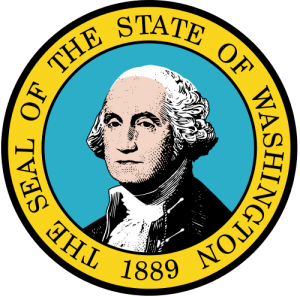 Washington State Population 2013
Washington State Population 2013
The United States Census Bureau estimates that the population of Washington in 2013 was 6,897,012, which is ranked the 13th largest population in the United States. Based on the last census in 2010, this shows a 2.6% increase in the population of the state of Washington. Based on the population and based on the area of the state, the population density of the state is 103 people per square mile, ranked the 25th largest density in the United States.
Washington Population Projections
Based on the historical trends of the state and expected migration, birth, and death rates, the population is expected to reach approximately 7.03 million people by the year 2015, which is an approximate 1.9% increase from the current population. By the year 2020, the population is expected to reach 7.41 million people, which is an approximate 7.4% increase from the current population. By the year 2025, the population is expected to reach 7.80 million people, which is an approximate 13.1% increase from the current population. By the year 2030, the population is expected to reach 8.165 million people, which is an approximate 18.4% increase from the current population. By the year 2035, the population is expected to reach 8.496 million people, which is an approximate 23.2% increase from the current population. By the year 2040, the population is expected to reach 8.804 million people, which is an approximate 27.6% increase from the current population.
Washington Land Mass
The state of Washington is about 360 miles and 240 miles wide with a square area of 71,303 square miles, making it the 18th largest state in the country. Of the 71,303 square miles, 4,721 square miles are covered by water. The highest point in the state of Washington is Mount Rainier, reaching 14,410 feet above sea level. The lowest point in the state is at the Pacific Ocean, which reaches sea level. The geographic center of Washington is located in Chelan County, 10 miles west southwest of Wenatchee. Washington is bordered by two states: Oregon and Idaho. However, Canada borders the state on the north and the Pacific Ocean borders the state on the west.
Washington is broken up into six distinct geographic land areas: Olympic Mountains, the Coast Range, the Puget Sound Lowlands, the Cascade Mountains, the Columbia Plateau, and the Rocky Mountains. The Olympic Mountains take up the northwest corner of the state. The majority of this area is wild land, which mainly lies in the Olympic National Park. The Coast Range is to the south of the Olympic Mountains. The Willapa Hills are part of this area and they look over into the Willapa Bay. The Puget Sound Lowlands are to the east of the Olympic Mountains. This is the area where about 75% of the population lives. The Cascade Mountains are to the east of the Puget Sound Lowlands. This area is full of mountains, including Mt. Rainier, which is the highest point in the state. The Columbia Plateau is located in the southern and central portions of the state. This area is part of the largest lava plateau in the world. It also contains multiple types of terrains, such as canyons, hills, good, fertile soil for farming, and valleys. Part of the northeast corner of the state is made up of the Rocky Mountains. This area is filled with the Columbia Mountains and also with important minerals, such as gold and zinc.
Washington Demographics
Of the approximate 6.897 million people in the state of Washington, about 50.1% of the population is female, while 49.9% is male. Also, approximately 82% of the population identifies as white (including Hispanic or Latino). But, out of that 82%, about 11% do identify as Hispanic or Latino and the other 71% as Caucasian. Those that identify as Black or African American make up only 4% of the entire population of the state of Washington. Those that identify as Asian make up about 8% of the population. The rest of the population is made up of those that identify as American Indian, Alaskan Native, Hawaiian, other Pacific Islanders, or those that identify as two or more races. These other races make up about 6% of the Washington population.
Visiting Seattle Washington
 Washington Religion
Washington Religion
The population of Washington identifies as religious at a rate much lower than the national average. About 35% of the state population identifies as religious, compared to the national average of 49%. Out of the 35%, about 12% identify as members of the Catholic Church, making it the largest denomination in the state of Washington. All the other Christian denominations make up about 21.7% of the population. Those who identify as Jewish, Islamic, or Eastern religions only make up 1.3% of the population. About 0.9% of the population identifies as members of an Eastern religion, compared to the national average of 0.5%.
Other Resources
Learn more about the state of Washington in the pacific northwest region here.


